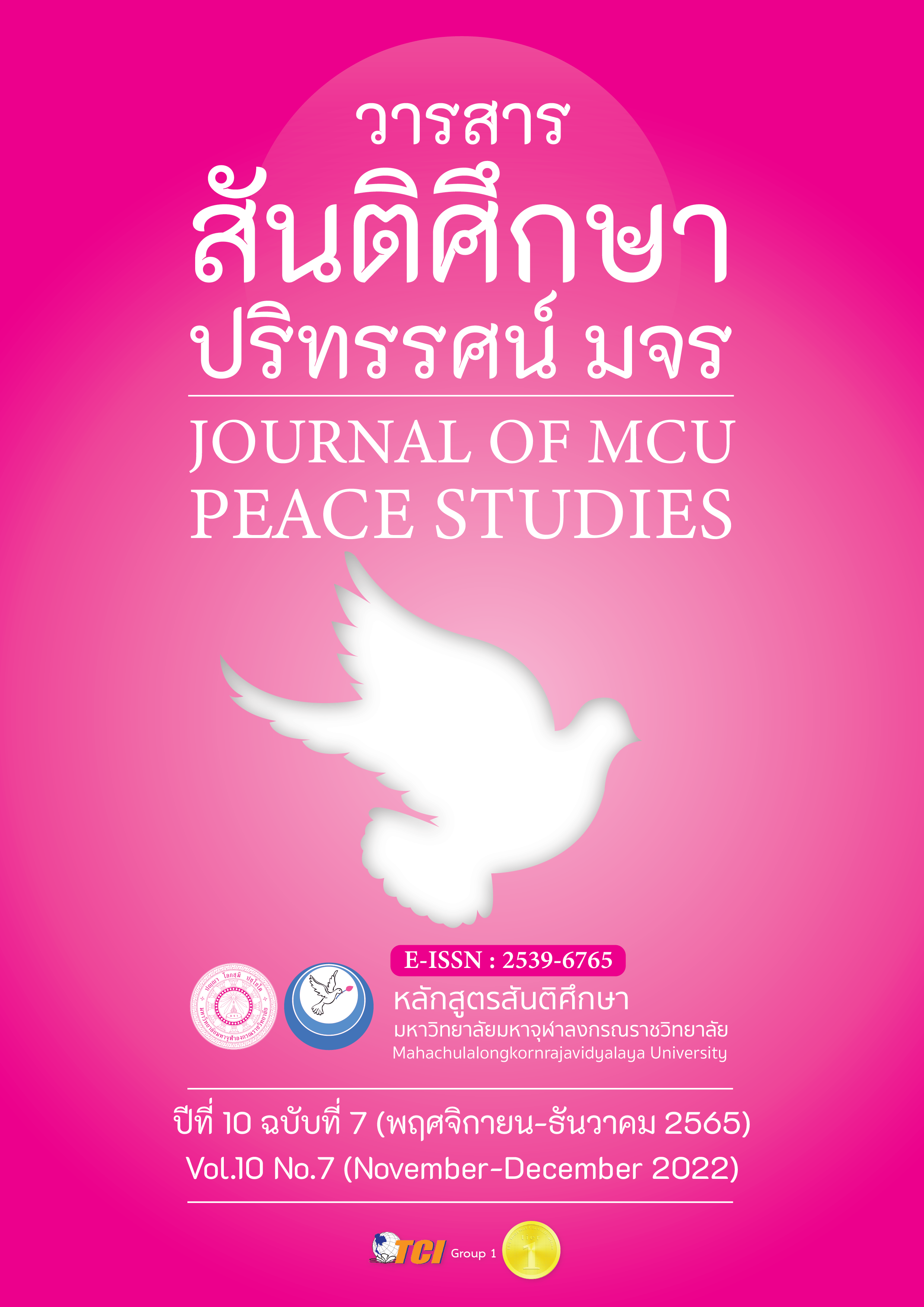การพัฒนาฝีมือแรงงานเพื่อเพิ่มขีดความสามารถของประเทศ
Main Article Content
บทคัดย่อ
บทความนี้มีความประสงค์จะจำแนกและพรรณนาปัญหาและสาเหตุของการขาดแคลนด้านแรงงานฝีมือในประเทศไทยและแนวทางการพัฒนาฝีมือแรงงานเพื่อแก้ใขปัญหาการขาดแคลนแรงงานฝีมือแนวทางการศึกษาใช้การศึกษาเอกสารเป็นหลักในการวิเคราะห์ปัญหาและสาเหตุของการขาดแคลนแรงงานฝีมือและศึกษาแนวทางในการพัฒนาฝีมือแรงงานเพื่อแก้ใขปัญหาดังกล่าว
ผลการศึกษาพบว่า 1) ปัญหาหลักของการขาดแคลนแรงงานฝีมือ อยู่ที่การจัดการการศึกษาที่ไม่ตอบสนองการพัฒนาอุตสาหกรรมหลักของประเทศ และค่านิยมของสังคมไทยในการเข้ารับการศึกษา 2)การพัฒนาฝีมือแรงงานหน่วยงานหลักยังเป็นของภาครัฐที่ไม่อาจปรับการจัดการและหลักสูตรฝึกอบรมให้สอดคล้องกับนวัตกรรมทางอุตสาหกรรมและเทคโนโลยีที่เปลี่ยนแปลงอย่างรวดเร็ว 3)แนวทางการพัฒนาฝีมือแรงงานควรเน้นความร่วมมือในการจัดการฝึกอบรมร่วมภาคอุตสาหกรรม จัดการฝึกอบรมแบบ on the job training
Article Details

อนุญาตภายใต้เงื่อนไข Creative Commons Attribution-NonCommercial-NoDerivatives 4.0 International License.
ทัศนะและความคิดเห็นที่ปรากฏในบทความในวารสาร ถือเป็นความรับผิดชอบของผู้เขียนบทความนั้น และไม่ถือเป็นทัศนะและความรับผิดชอบของกองบรรณาธิการ ยินยอมว่าบทความเป็นลิขสิทธิ์ของวารสาร
เอกสารอ้างอิง
Akaravorn, J. (2006). Creating People to Create Works. Bangkok: Tao Publishing House.
Amornvivat, S. (2013). Thailand's Labor Shortages Underline Deeper Problems. Retrieved Jan 2, 2022, from: https://www.scbeic.com/th/detail/product/753>
Amornvivat, S. (2019). Firm Struggle for Mismatched Society. Retrieved Jan 2, 2022, from: https://shorturl/auYqz
Veneri, C. (1999). Can Occupational Labor Shortages Be Identified Using Available Data? Monthly Labor Review, 122(3), 15-21.
Chanthaphong, S., & Angsriprasert, C. (2011). Thai Labor Shortage: Problems Cause and Solutions Integration. Focused and Quick (FAQ), 57(3), 1-7.
Danai, T. (1994). Human Development Strategy: Challenges for Business Success. Bangkok: Chulalongkorn University.
Dearden, L., Reed, H., & Reenen, J. V. (2006). The Impact of Training on Productivity and Wages: Evidence from British Panel Data. Oxford Bulletin of Economics & Statistics, 68(4), 397-421.
Education Council Secretariat National Education. (2017). The National Scheme of Education B.E. 2560-2579 (2017-2036). Bangkok: Prigwhan.
Jozef, K., & Stijn, V. (2015). The Impact of Training on Productivity and Wages: Firm Level Evidence. The Review of Economics and Statistics, 97(2), 485-497.
Kapilkan, M. (2021). Column "Thinking Together", Prachachat Business. Retrieved March 4, 2022, from: https://shorturl.asia/mk3n1
Kraisith, P. (2016). Working Culture of Thai People. Postdoctoral Study Thesis. Education Service Field. (Doctoral Dissertation). Graduate School Srinakharinwirot University Prasarnmit, Bangkok.
Leepipatpaiboon, P., & Thongsri, N. (2018). Industrial Robots and Its Impacts on Labor Market. Retrieved March 16, 2020, from: https://shorturl.asia/eFlU4>
Lieopairoj, S. (2020). Reskilling, Upskilling: Challenges that Are Increasingly Necessary for the Human Race of the Future. Bangkok: Siam Chapmanite Family.
Lyle, M., Spencer, Jr., & Signe, M. S. (1993). Competence at Work: Models for Superior Performance. New York: Wiley.
National Economic and Social Development Board. (2015). Thai Economic Performance in Q3 and Outlook for 2015-2016. Retrieved Jan 2, 2022, from: https://shorturl.asia/vl7Mx>
Pholphirul, P. (2017). Educational Mismatches and Labor Market Outcomes: Evidence from both Vertical and Horizontal Mismatches in Thailand. Emerald Publishing Limited, 59(5), 534-546.
Pholphirul, P. (2012). Labour Migration and the Economic Sustainability in Thailand. Journal of Current Southeast Asian Affairs, 31(3), 59-83.
Piampongsan, T. et al. (2018). Upgrading Skill, Upgrading Thailand. Bangkok: Future Innovative Thailand Institute: FIT.
Prapatthong, U., & Phimphisut, C. (2015). The Study of Labor Demand and Skill Development in the Mekong Sub-Region. MFU Connexion Journal of Humanities and Social Sciences, 4(2), 43.
Sapana, A., Aaron De, S., Sébastien, L., & Angelika, R. (2020). To Emerge Stronger from the COVID-19 Crisis, Companies Should Start Reskilling their Workforces Now. Retrieved March 19, 2020, from: https://shorturl.asia/kGXbE>
Srinond, M. (2006). The Development of Indicators: Concepts and Theories. Retrieved March 3, 2020, from: https://shorturl.asia/uELWS>
Somchai, J. (2012). Thailand in Middle Income Trap. TDRI Quarterly Review. 27(2), 13-20.
Sorat, T. (2021). A Labor Market in 2022. Retrieved Jan 2, 2022, from: https://short url.asia/4Q6lR>
Sorat, T. (2021). Labor Market Trends in 2021 When Thailand Remains with COVID-19. Labor Market. Retrieved Jan 2, 2022, from: https://shorturl.asia/Me5x6>
Talent Guard. (2021). Reskilling and Upskilling: A Strategic Response to Changing Skill Demands. Retrieved March 27, 2020, from: https://shorturl.asia/IQJip>
Triyangkulsri, P. (2019). Guidelines for the Development of Labor Competency for Industry 4.0 Policy. Retrieved March 27, 2020, from: https://shorturl.asia/gS3oH>
Varanyuwatana, S. (2008). Economics Policy. Retrieved March 13, 2020, from: https:// shorturl.asia/DSwGq>
Wuthiphan, T. (2011). Projection of Future Labor Force Trends Classified by Range Age. Bangkok: Labor Market Research Division.


